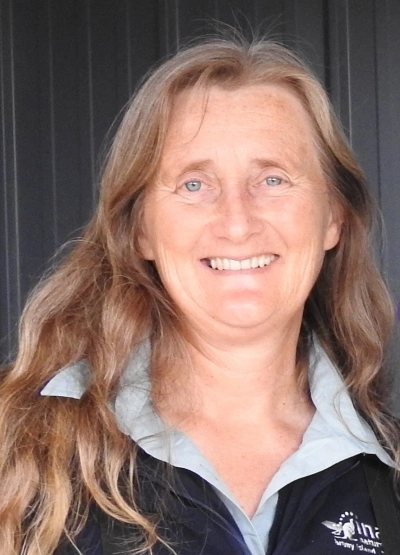This report, compiled by Dr Tonia Cochran and produced by the Threatened Species Unit (DPIWE), was published in 2003.
The report outlines in detail the threatened plant and animal species that live on Bruny Island, the listed migratory birds that frequent Bruny Island, the species of high conservation significance, and the main activities that are putting pressures on these different plant and animal species' long-term survival.
"Although a large portion of Bruny Island is protected within National Park, the threats to these species extend beyond park borders, and conservation work cannot be successful unless the whole community supports it." - Dr Tonia Cochran
This report is an invaluable resource for anyone concerned with ensuring that the extraordinary plants, animals, and landscape values of Bruny Island that make it such an incredible microcosm of Tasmania, are protected for the future.
This report can be viewed and/or downloaded in sections here:
First part of Bruny Island Plan - contents, introduction, importance of Bruny Island to threatened species, key habitats and threatened animal species on Bruny Island
Second part of Bruny Island Plan - threatened plant species on Bruny Island
Last part of Bruny Island Plan - migratory birds, threatened plant communities and plants and animals of high conservation significance
Appendix 7 - map of locations of threatened and high conservation significance animals on Bruny Island
Appendix 8 - map of locations of threatened and high conservation significance plants on Bruny Island
Appendix 9 - map of Regional Forest Agreement priority forest on Bruny Island
Appendix 10 - map of Bruny Island habitat types
Cover Image of Forty-Spotted Pardalote by Kim Murray
Each species is a masterpiece, a creation assembled with extreme care and genius. - E.O.Wilson

Dr Tonia Cochran
This report, compiled by Dr Tonia Cochran and produced by the Threatened Species Unit (DPIWE), was published in 2003.
The report outlines in detail the threatened plant and animal species that live on Bruny Island, the listed migratory birds that frequent Bruny Island, the species of high conservation significance, and the main activities that are putting pressures on these different plant and animal species' long-term survival.
"Although a large portion of Bruny Island is protected within National Park, the threats to these species extend beyond park borders, and conservation work cannot be successful unless the whole community supports it." - Dr Tonia Cochran
This report is an invaluable resource for anyone concerned with ensuring that the extraordinary plants, animals, and landscape values of Bruny Island that make it such an incredible microcosm of Tasmania, are protected for the future.
This report can be viewed and/or downloaded in sections here:
First part of Bruny Island Plan - contents, introduction, importance of Bruny Island to threatened species, key habitats and threatened animal species on Bruny Island
Second part of Bruny Island Plan - threatened plant species on Bruny Island
Last part of Bruny Island Plan - migratory birds, threatened plant communities and plants and animals of high conservation significance
Appendix 7 - map of locations of threatened and high conservation significance animals on Bruny Island
Appendix 8 - map of locations of threatened and high conservation significance plants on Bruny Island
Appendix 9 - map of Regional Forest Agreement priority forest on Bruny Island
Appendix 10 - map of Bruny Island habitat types
Cover Image of Forty-Spotted Pardalote by Kim Murray
Each species is a masterpiece, a creation assembled with extreme care and genius. - E.O.Wilson
You might like...
Bruny Island wildlife
Bruny Island is a haven for rare and unique birds and animals, and is one of the best bird-watching spots in Australia.

A National Park for Bruny Island

Inala Jurassic Garden's Noah's Ark project
Pied Oystercatcher
The Pied Oystercatcher is a large wading shore-bird with a black face, back and chest, a white belly, white tail with black band at its end and a white wing-bar visible when flying. Its beak is a bright orange.
Newsletter
Sign up to keep in touch with articles, updates, events or news from Kuno, your platform for nature
